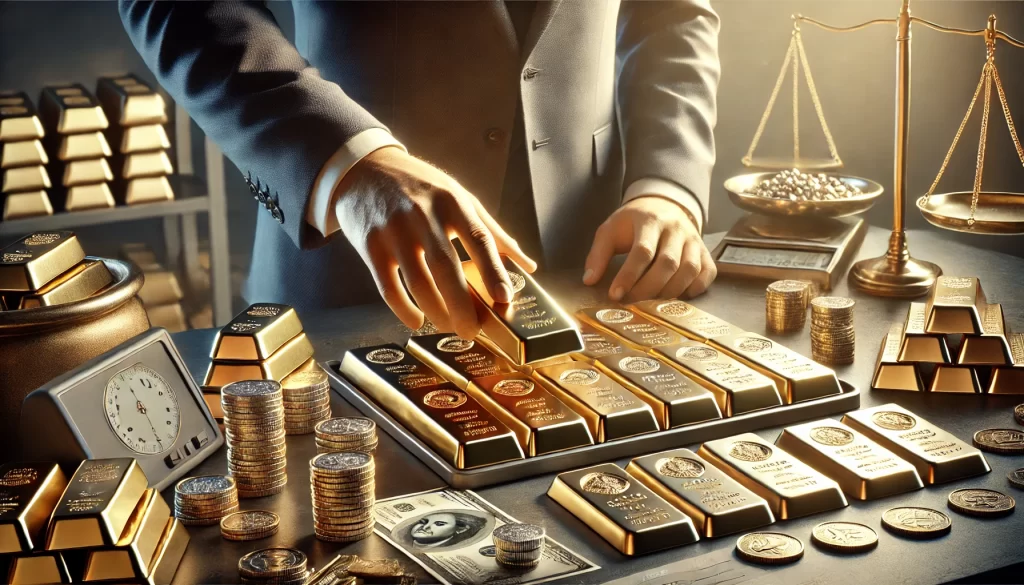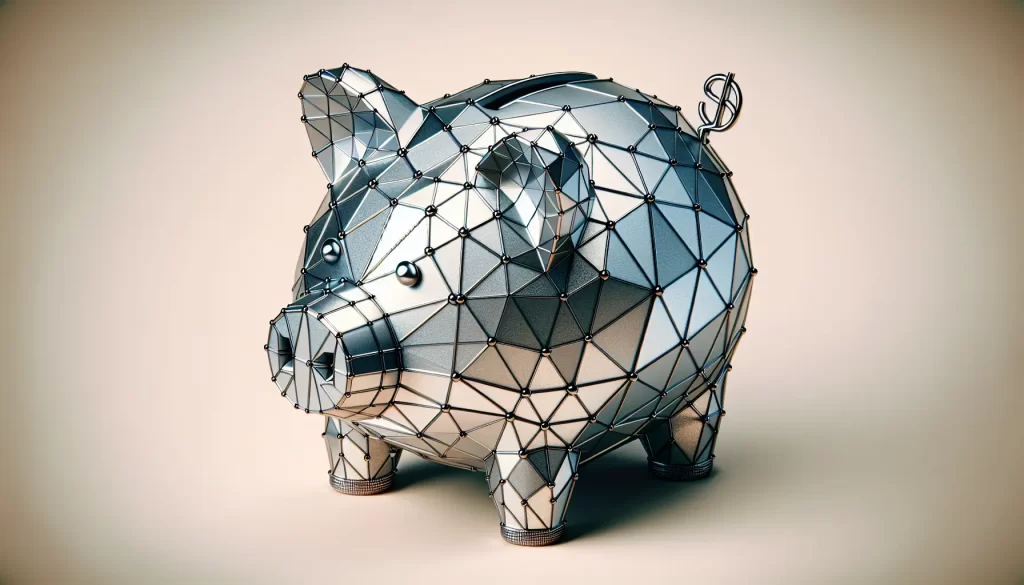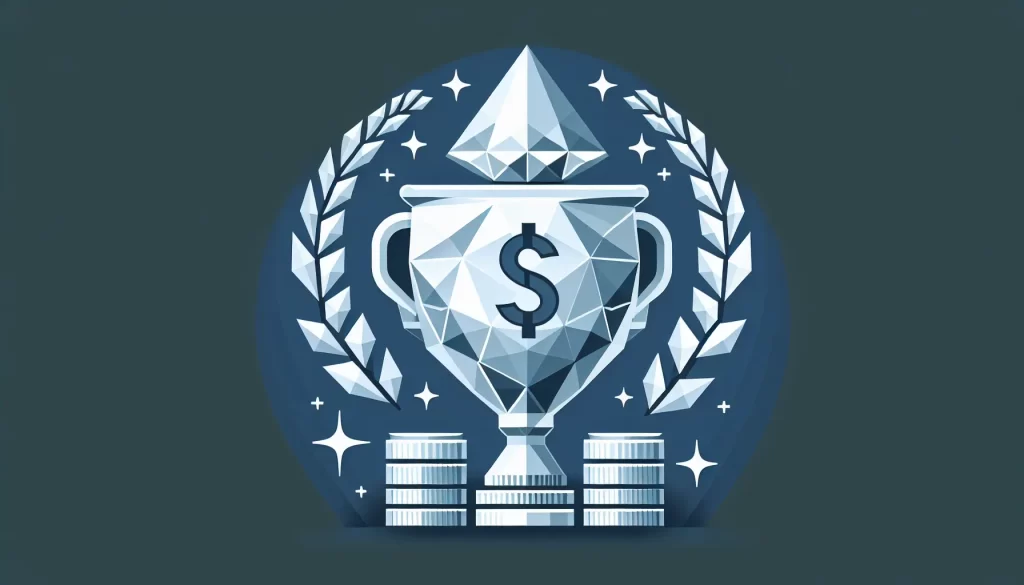One question that I have heard often since creating this website is, “Why invest in precious metals?” and “How do you decide on precious metal dealers?”
For some the benefits come in the form of diversification, and for others it is valued as a hedge against inflation.
So, in this article I wanted to bring forward information on Precious Metal IRAs so that you can make your most informed decision.
I also include links to different types of precious metals, like Palladium which has a price attached to commercial value compared to gold which has it’s price based on overall sentiment.
Quick Disclaimer:
The content provided in this article is for informational purposes only and should not be considered financial or investment advice. Always consult with a qualified financial advisor before making any decisions regarding Precious Metal or IRAs. Additionally, this article contains affiliate links, and I may earn a commission if you make a purchase through these links, at no additional cost to you.
Benefits of Precious Metals
Precious metals offer several advantages as an investment:
- Hedge Against Inflation: Precious metals like gold and silver are known for their stability and global acceptance. They provide a safeguard against the loss of purchasing power, making them effective hedges against inflation.
- Safe Haven Asset: During political or economic turmoil, precious metals often retain their value better than fiat currencies. This inherent value exists independently of any government, offering a distinct advantage.
- Portfolio Diversification: Adding precious metals to your investment mix helps diversify your portfolio, reducing risk. They provide a counterbalance to more volatile investments like stocks and bonds (Money).
- Direct Ownership: Investing in physical forms of precious metals, such as bars and coins, gives you direct access and control over your assets. This distinguishes them from intangible investments like stocks.

Types of Precious Metals
Several types of precious metals can be considered for investment, each with its unique properties and benefits:
- Gold: Gold is perhaps the most well-known precious metal. It is highly valued for its rarity, durability, and historical significance. Gold is often seen as a stable investment, making it a popular choice for those looking to hedge against inflation. Learn more about gold investing.
- Silver: Silver is another popular investment metal, known for its industrial uses as well as its value as a precious metal. It tends to be more volatile than gold but can offer higher returns. Explore silver investing for more insights.
- Platinum: Platinum is rarer than gold and silver and has significant industrial applications, particularly in the automotive industry. Its price can be more volatile due to its industrial demand. Discover more about platinum investing.
- Palladium: Palladium is primarily used in manufacturing catalytic converters for cars, making it highly valuable in the automotive sector. Its price can fluctuate based on industrial demand and supply constraints. Read about palladium investing.
| Metal | Key Features |
|---|---|
| Gold | Stability, hedge against inflation, historical value |
| Silver | Industrial uses, higher volatility, potential for higher returns |
| Platinum | Industrial demand, rarity, price volatility |
| Palladium | Automotive industry use, supply constraints, price fluctuations |
Each type of precious metal offers unique benefits and can play a different role in your investment strategy. For more detailed analysis and insights, explore our articles on precious metals investing and investing in physical gold.
Understanding the Market
So one of the first aspect to cover when assessing whether to invest with precious metal dealers, understanding the market dynamics is crucial. This involves knowing the factors that influence prices and the prevailing market trends.
Price Influencers
Several factors influence the prices of precious metals. I mentioned in the opening how the value of some precious metals is attached to commercial use, whereas others are attached to cultural significance.
Market Availability
The availability of precious metals like gold and silver directly impacts their prices.
For instance, experts predict that only 20% of the world’s gold remains to be mined, with the last piece expected to be extracted in 20 years. This scarcity can lead to increased prices.
Whereas Palladium has its own unique principles.
Interest Rates
Interest rates also have a significant effect. When interest rates are low, precious metals become more attractive as they offer a better return compared to savings accounts or bonds. Conversely, high-interest rates can lead to a drop in precious metal prices as investors seek higher returns elsewhere.
Investor Sentiment
Investor sentiment often drives precious metal prices. For example, during economic downturns, investors tend to flock to safe-haven assets like gold, driving up prices. Historically, precious metals have been among the safest long-term investments and have shown resilience during economic downturns.
| Influencer | Impact on Price |
|---|---|
| Market Availability | Increased scarcity raises prices |
| Interest Rates | Lower rates boost prices; higher rates reduce prices |
| Investor Sentiment | Economic uncertainty drives prices up |
Market Trends
Knowing the market trends can give you a competitive edge.
Rising Demand
The demand for precious metals continues to rise. The US government, for instance, is currently shedding securities and investing in gold, indicating recognition of the economic benefits of these assets (American Hartford Gold).
Hedge Against Inflation
Gold is often viewed as a hedge against inflation. Its price is influenced by various economic factors, including market availability, interest rates, and investor sentiment. The price of gold reached all-time highs in March 2023, driven by these factors (Money).
Long-Term Stability
Precious metals are considered stable investments compared to other commodities and stocks. They are attractive for long-term value retention and as a hedge against inflation (Money).
| Trend | Impact on Investment |
|---|---|
| Rising Demand | Increased prices and investment appeal |
| Hedge Against Inflation | Provides financial security in uncertain times |
| Long-Term Stability | Attracts long-term investors |
Understanding these price influencers and market trends can help you make smarter investment choices. For more detailed insights, visit our article on investing in precious metal market trends.
Choosing a Dealer
Selecting the right dealer is a crucial step when investing in precious metal dealers. Let’s dive into what makes a dealer reputable and what you should look for to make an informed decision.
Reputable Dealers
When choosing a dealer for your precious metals investments, several factors can help you identify a reputable and reliable option:
- Industry Experience: Established dealers with over 10 years in the business demonstrate stability and resilience, having weathered economic fluctuations. This stability is essential, especially in volatile markets like the one seen during the UK’s 2022 autumn economic crisis.
- Registration and Compliance: A reputable dealer should prominently display all required registration numbers and compliance documentation. Membership in industry associations such as the British Numismatic Trade Association (BNTA) or the London Bullion Market Association is a strong indicator of credibility.
- Transparency in Pricing: Transparency is crucial. Reputable dealers provide live pricing for all products and are upfront about any fees or commissions associated with purchases. They should also have competitive buy-back policies (Physical Gold).
- Customer Testimonials and Reviews: Authentic customer testimonials and industry reviews that cite specific experiences, such as product delivery and customer service, are vital for evaluating a dealer’s reputation (Physical Gold).
- Comparative Analysis: Conducting a comparative analysis of offerings from 3-5 dealers can help you identify major variances in pricing and services, ensuring you make an informed decision (Physical Gold).
What to Look For
When evaluating potential dealers, consider the following aspects to ensure you are choosing the best option for your needs:
Product Range: Look for dealers offering a wide range of products, including physical gold, silver coins, and collectible coins. A diverse inventory allows you to diversify your investments effectively.
Pricing and Fees: Ensure the dealer provides transparent pricing with no hidden fees. The table below illustrates the importance of transparency in pricing:
Customer Service: Excellent customer service is a hallmark of a reputable dealer. Look for dealers with responsive support teams that can assist with your queries and concerns promptly.
Educational Resources: A good dealer offers educational resources to help you understand the market better. This may include market analysis, investment guides, and trend reports.
Secure Transactions: Ensure that the dealer provides secure payment methods and protects your personal information. This is particularly important for online transactions.
Storage Solutions: For those investing in physical metals, consider dealers that offer secure storage solutions to protect your investments.
By focusing on these criteria, you can confidently choose a dealer who will help you navigate the world of precious metals investing and elevate your financial portfolio. For more on diversifying your investments, explore our articles on investing in precious metal ETFs and investing in precious metal futures.

Investment Options
When considering investing in precious metals, it’s important to understand the various options available. Each choice has its unique benefits and risks. Here, we’ll explore three popular investment options: physical metals, ETFs and mutual funds, and futures and IRAs.
Physical Metals
Investing in physical forms of precious metals, such as bars and coins, provides direct access and control over your assets. This option is favored by risk-averse investors who prefer tangible assets over intangible ones. Physical metals include:
- Gold Bars and Coins: Widely recognized and easy to trade. For more information, see investing in physical gold and investing in gold coins.
- Silver Bars and Coins: Often seen as a more affordable option. Learn more at investing in physical silver and investing in silver coins.
- Platinum and Palladium: Less common but provide diversification. Details on these can be found in platinum investing and palladium investing.
| Metal Type | Investment Form | Control Level | Liquidity |
|---|---|---|---|
| Gold | Bars, Coins | High | High |
| Silver | Bars, Coins | High | Moderate to High |
| Platinum | Bars, Coins | High | Moderate |
| Palladium | Bars, Coins | High | Moderate |
ETFs and Mutual Funds
Exchange-traded funds (ETFs) and mutual funds offer a more passive approach to investing in precious metals. These funds pool money from multiple investors to buy a diversified portfolio of precious metal assets. This can include physical metals, stocks of mining companies, or a combination of both.
- Precious Metal ETFs: Track the price of a specific metal or a basket of metals. Learn more at investing in precious metal ETFs.
- Mutual Funds: Invest in a diversified portfolio of mining stocks and other related assets. For further details, see investing in precious metal mutual funds.
| Fund Type | Investment Form | Control Level | Liquidity |
|---|---|---|---|
| ETFs | Shares | Moderate | High |
| Mutual Funds | Shares | Moderate | Moderate |
Futures and IRAs
For those looking to take a more speculative or long-term approach, futures contracts and individual retirement accounts (IRAs) are viable options.
- Futures Contracts: Allow you to buy or sell a specific amount of a precious metal at a predetermined price at a future date. This can be risky but potentially rewarding. Learn more at investing in precious metal futures.
- Precious Metal IRAs: These allow you to include physical metals like gold and silver in your retirement portfolio, offering tax advantages. For more information, visit investing in precious metal IRAs.
| Investment Type | Investment Form | Control Level | Liquidity |
|---|---|---|---|
| Futures | Contracts | High | Varies |
| IRAs | Physical Metals | High | Low (until retirement) |
Investing in precious metals offers various avenues to diversify your wealth. Whether you choose physical metals, ETFs and mutual funds, or futures and IRAs, each option provides unique benefits and risks. Be sure to explore more about precious metals investing and balancing risk and reward to make informed decisions.
Risks and Considerations
When investing in precious metal dealers, understanding the associated risks and considerations is crucial. Let’s delve into two key aspects: market volatility and safe storage.
Market Volatility
Precious metals are often seen as stable investments compared to stocks and other commodities. They are particularly attractive for long-term value retention and as a hedge against inflation. However, like all investments, they are not entirely immune to market fluctuations.
Historically, precious metals have shown resilience during economic downturns, as investors often flock to these assets during volatile market conditions. This demand can drive prices up, but it can also lead to significant price swings. Here’s a look at how gold prices have fluctuated over recent years:
| Year | Average Gold Price (USD/oz) |
|---|---|
| 2018 | 1,268 |
| 2019 | 1,393 |
| 2020 | 1,770 |
| 2021 | 1,798 |
| 2022 | 1,801 |
Despite these fluctuations, liquidity risk is rarely an issue for precious metal investors. There is almost always a buyer in the global market for gold or silver, although securing shipping can sometimes pose a challenge.
Safe Storage
One of the primary considerations when investing in physical precious metals is safe storage. Proper storage is essential to protect your investment from theft, damage, and other risks. Here are some options to consider:
Home Storage
Storing precious metals at home might seem convenient, but it comes with significant risks. Ensure you have a high-quality safe, and consider additional security measures such as alarm systems and insurance.
Bank Safe Deposit Boxes
A bank safe deposit box offers a secure storage solution. However, access might be limited to banking hours, and there may be ongoing rental fees.
Professional Vault Storage
Professional vault storage is likely the safest option for storing precious metals. These facilities are designed specifically for secure storage and often offer insurance coverage. Look for reputable storage providers with a proven track record.
For more information on safe storage options, visit our article on investing in precious metal storage.
By understanding these risks and considerations, you can make more informed decisions when investing in precious metals. Diversifying your portfolio and balancing risk and reward is key to a successful investment strategy. For more tips on diversifying your investments, check out our article on investing in precious metal diversification.
Diversifying Your Portfolio
Diversifying your investment portfolio by adding precious metals is a smart way to mitigate risks and enhance your financial stability. Here’s how you can effectively add metals to your portfolio and balance risk and reward.
Adding Metals to Your Portfolio
Investing in precious metals such as gold, silver, platinum, and palladium offers a unique way to diversify your assets. These metals are considered stable investments, retaining their value even during economic turbulence. Here’s how you can add these metals to your portfolio:
1. Physical Metals:
- Gold: A classic choice often seen as a safe haven. Learn more in investing in physical gold.
- Silver: More affordable than gold and offers high liquidity. Explore investing in physical silver.
- Platinum and Palladium: These are less common but can offer significant returns. Check out platinum investing and palladium investing.
2. ETFs and Mutual Funds:
- Investing in ETFs and mutual funds allows you to gain exposure to precious metals without the need for physical storage. See investing in precious metal ETFs for more information.
3. Futures and IRAs:
- Precious metal futures and IRAs are more advanced options that can offer tax advantages and potential for higher returns. Learn more in investing in precious metal IRAs.
Balancing Risk and Reward
When adding precious metals to your portfolio, it’s essential to balance the potential risks and rewards. Here’s how you can do it effectively:
1. Assess Your Risk Tolerance:
- Determine how much risk you are comfortable with. For risk-averse investors, buying physical metals can be a safer bet (Provident Metals).
2. Diversify Within Metals:
- Don’t just stick to one metal. A well-balanced portfolio may include a mix of gold, silver, platinum, and palladium, depending on your financial goals and risk tolerance (CBS News).
3. Monitor Market Trends:
- Stay informed about market trends and price influencers. This helps you make better decisions and adjust your portfolio accordingly. Visit investing in precious metal market trends for the latest updates.
4. Allocate Wisely:
- Allocate a percentage of your overall portfolio to precious metals. Financial experts often recommend 5-10% as a good starting point for diversification.
5. Consider Safe Storage:
- Safeguard your physical investments by choosing secure storage options. Learn more about investing in precious metal storage.
By following these steps, you can effectively integrate precious metals into your investment strategy, balancing potential risks with the rewards of a diversified portfolio. For more insights, visit our section on precious metals investing.



